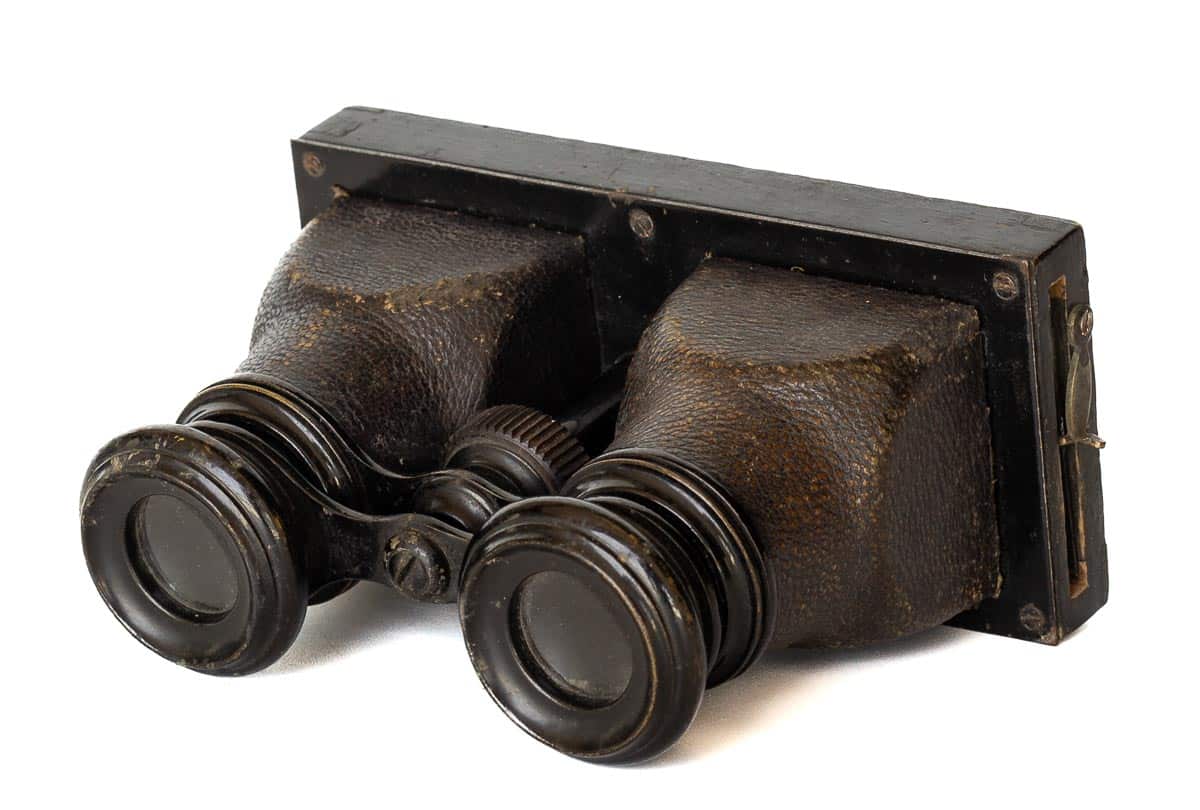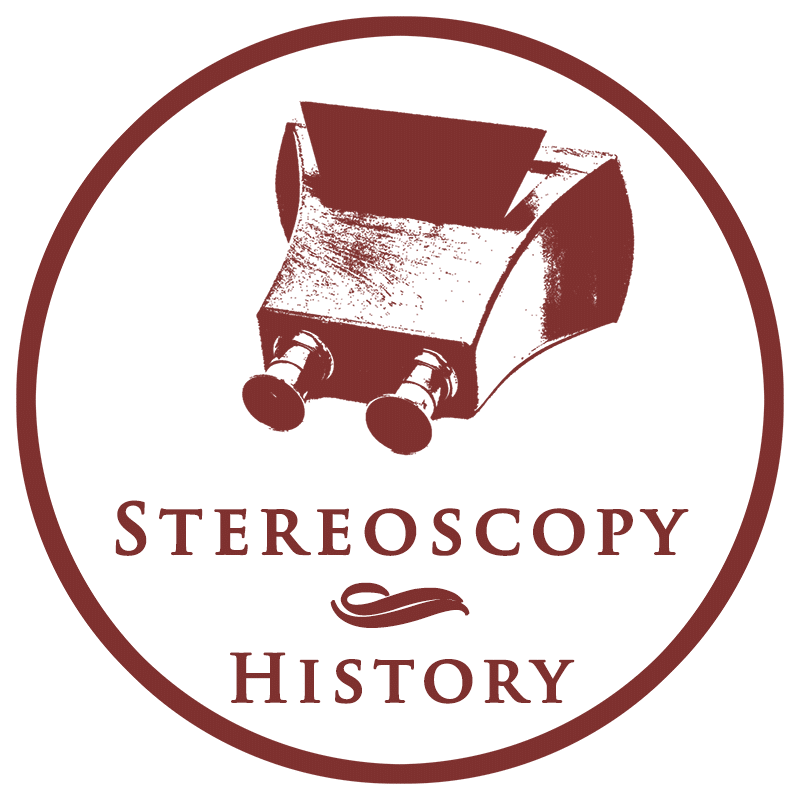
La Jumelle Lux is a compact, binocular-shaped stereoscope. The tubes are covered with black leather. It is unclear when the viewer was introduced, but it was probably about the same time as the introduction of L’Omnium and before Bize started designing larger tabletop viewers.
Specifications
| Manufacturer: | Lucien Bize, Gustave Jacob, Robert Pleyau |
| Year of introduction: | c. 1904 |
| Year of manufacture: | Unknown |
| Type: | Hand-held |
| Viewer: | Single-view |
| Serial number: | None |
| Stereoview support: | Glass |
| Stereoview format: | 45 x 107 mm |
| Lens focussing: | Yes |
| Inter-ocular adjustment: | No |
| Eyepiece blinders: | No |
| Dimensions (L x W x H): | 12 x 9 x 5.5 cm |
| Construction: | Black painted wood and metal. Black faux leather. |
Glossary: hand-held / inter-ocular adjustment / single-view
Lucien Bize
Lucien Albert Bize (1866–?) designed a range of innovative and compact stereoscopes in the early 20th century in France. Many names were associated with the manufacturing of his designs. In 1902, Bize patented his first stereoscope design for the detachable hand-held stereoscope that was marketed under the name L’Omnium. His early stereoscope designs were manufactured by Maison Gustave Jacob at 22, Rue Oberkampf in Paris. After Jacob’s bankruptcy in 1911, Bize continued the manufacturing of stereoscopes at 69, Rue Oberkampf.
On 1 January 1913, Bize sold his company to Robert Pleyau. Bize’s last patent was filed in 1912. Pleyau sold a part of his business activities to La Société E. Brose et Cie in 1917, but he remained active as an entrepreneur at 69, Rue Oberkampf. It is unclear if Pleyau sold the business activities that were related to stereoscopes, but it seems that the manufacturing of Bize’s stereoscopes ended during the First World War.
The complete story of Lucien Bize
